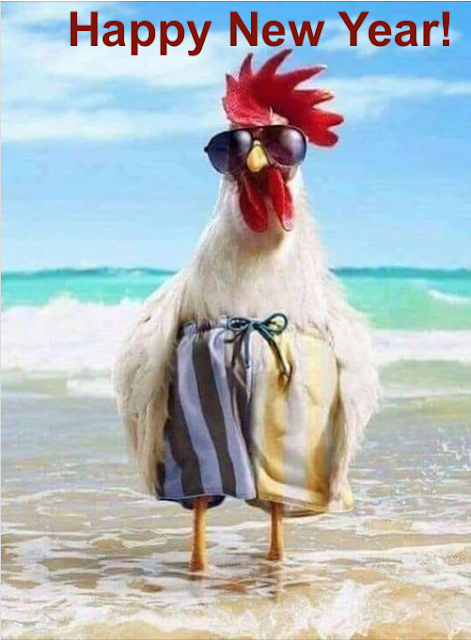The Hadeda is famous for being South Africa’s natural alarm clock. I'm sure everybody will agree with that. When we lived in Gauteng on our smallholding, we rarely saw any Hadedas, so the excitement was great when they did appear. Here in Ballito, KwaZulu Natal, it's a totally different story - their numbers seem to be on a par (to me at least) to that of the Indian Mynah and the Red-winged Starling.
And I am utterly thrilled to be seeing them in such abundance! And I just absolutely LOVE their call, but must admit that I prefer to be woken up by the Burchell's Cuckoo soothing call and not the hart-stopping call of the Hadeda at 4am in the morning!
Usually at 4.30am !!
.
Pest, charming oddity or just background noise, the Hadeda ibis is a feathered phenomenon in suburban South Africa. Its feathers are a drab gray or brown, so it's not on a bird lover bucket list. But the bird now has a small niche in popular culture. Somelodges and restaurants carry its name, a website offers a ringtone download of its cry and a pair of South African musicians produced a song called: "Harry the hungry Hadeda." Some call it a "flying vuvuzela," recalling the din of the plastic horn used by stadium fans during the World Cup soccer tournament in South Africa in 2010.
The Hadeda or Hadeda Ibis,is an ibis found in Sub-Saharan Africa. . It is named for its loud three to four note calls uttered in flight especially in the mornings and evenings when they fly out or return to their roost trees. While Hadeda Ibis (Bostrychia hagedash) is not a conservation listed species, it is protected under provincial regs. Hadeda Ibis is protected in all but one province, namely KZN. The species is threatened, though, by extended droughts which reduce food availability by causing damp soil to harden, making it more difficult to probe for insects. The population in South Africa also declined markedly at the turn of the century due to hunting during the colonial expansion.
The Hadeda Ibis is monogamous and breeds in solitary pairs, unlike other ibis species. They breed from July to January in South Africa. They lay 1 to 5 eggs which are incubated by both parents. Incubation lasts up to 28 days. Young are independent at about 40 days.
.
Males display before choosing a mate. The pair then engages in mutual bowing and display preening.
The Hadeda Ibis is a social bird usually seen in pairs or in small groups of between 5 and 30 birds, and seldom as a single individual. Occasionally it can form flocks of some 50-200 individuals. They feeds on insects, millipedes and earthworms, using their long scimitar-like bill to probe soft soil. It also eats larger insects, such as the Parktown prawn, as well as spiders and small lizards. Sometimes it swipes dog food meant for pets, splatters parked cars and driveways with droppings and yanks residents from sleep with jarring squawks at first light.
Some ornithologists credit the Hadeda's dietary preferences with curbing the population of the "Parktown Prawn," a king cricket (Libanasidus vittatus) named after a Johannesburg suburb that can creep or leap into homes at night, horrifying residents. The Hadeda, in turn, has few natural predators in cities, facing instead the lesser peril of flying into windows or getting hit by a car. Although totally harmless, the insects can jump actively and often eject offensive black fecal liquids when threatened. Accordingly, they frighten nervous persons and they may chew carpets and fabrics.
You may love 'em or hate 'em, but this striking African bird is surrounded by many ancient legends and myths. One myth tells of how the northern bald ibis, Geronticus eremita, a symbol of fertility in some regions of Turkey, was one of the first birds that Noah released from the Ark.
As a lexophile (logophile?), I was pleased to learn that the plural of ibis is not "ibises" as most people would guess it to be, but instead, the plural is either ibes or even more interesting; ibides.
The Hadeda Ibis is a social bird usually seen in pairs or in small groups of between 5 and 30 birds, and seldom as a single individual. Occasionally it can form flocks of some 50-200 individuals. They feeds on insects, millipedes and earthworms, using their long scimitar-like bill to probe soft soil. It also eats larger insects, such as the Parktown prawn, as well as spiders and small lizards. Sometimes it swipes dog food meant for pets, splatters parked cars and driveways with droppings and yanks residents from sleep with jarring squawks at first light.
Some ornithologists credit the Hadeda's dietary preferences with curbing the population of the "Parktown Prawn," a king cricket (Libanasidus vittatus) named after a Johannesburg suburb that can creep or leap into homes at night, horrifying residents. The Hadeda, in turn, has few natural predators in cities, facing instead the lesser peril of flying into windows or getting hit by a car. Although totally harmless, the insects can jump actively and often eject offensive black fecal liquids when threatened. Accordingly, they frighten nervous persons and they may chew carpets and fabrics.
You may love 'em or hate 'em, but this striking African bird is surrounded by many ancient legends and myths. One myth tells of how the northern bald ibis, Geronticus eremita, a symbol of fertility in some regions of Turkey, was one of the first birds that Noah released from the Ark.
As a lexophile (logophile?), I was pleased to learn that the plural of ibis is not "ibises" as most people would guess it to be, but instead, the plural is either ibes or even more interesting; ibides.

















